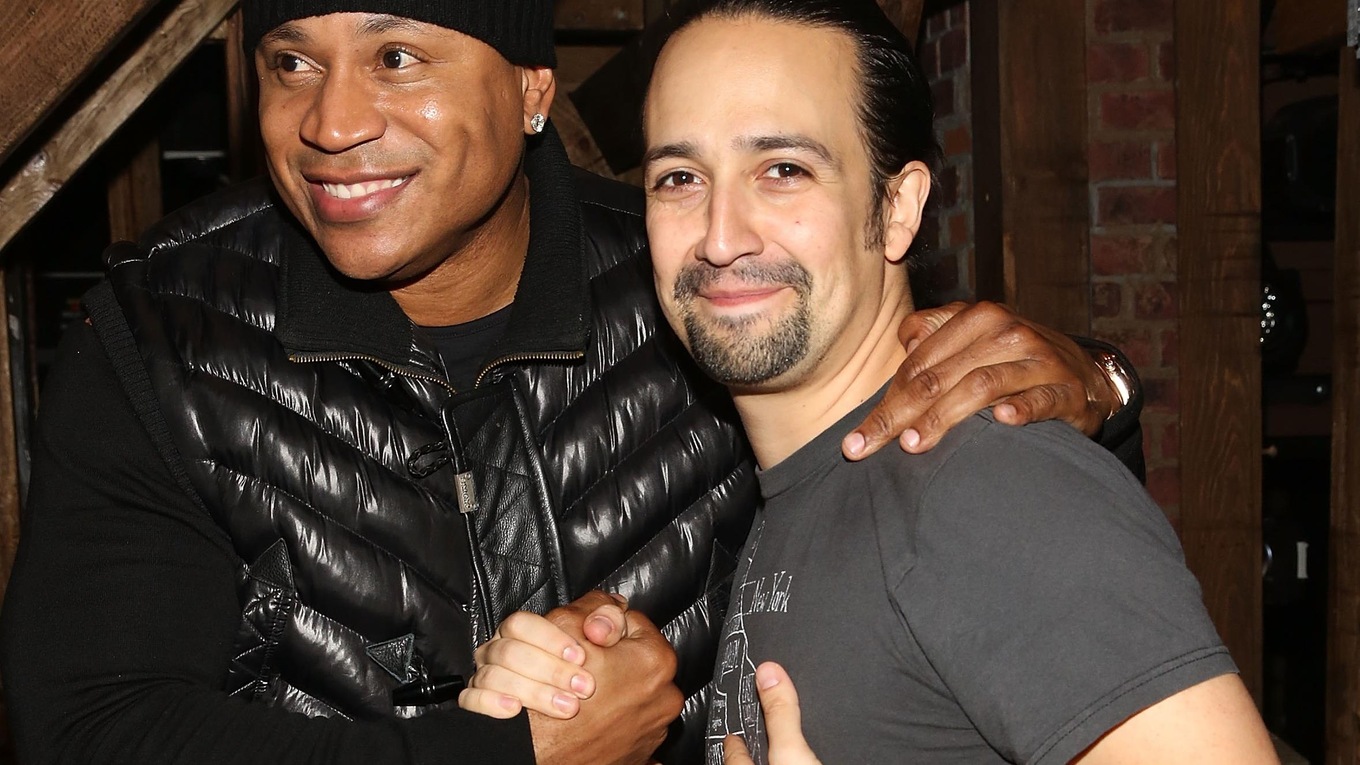Honoured with a record 16 nominations at this weekend’s Tony Awards, the musical Hamilton is already a bonafide phenomenon. Conceived and written by lead actor Lin-Manuel Miranda and based on the biography of Alexander Hamilton written by Ron Chernow, Hamilton is a musical that hones in on the story of American founding father with a hip-hop edge.
It recounts the true story (with dramatic license, of course) of how Hamilton came as an orphaned immigrant from the Caribbean island of St. Croix and rose to the role of aide and treasury secretary to America’s first president George Washington.
The musical, which has already snagged the 2016 Pulitzer Prize for drama, the Grammy for best musical theatre album – as well as earned Miranda a McArthur 'genius' grant – has been playing to sold-out audiences for several months on Broadway.
The musical is scheduled to head to Chicago this fall and then gradually out to San Francisco, Los Angeles, Boston and Washington. David Mirvish is also reportedly in talks to bring the show to Toronto.
Miranda, who plays the titular character, tells the 18th century story with a contemporary twist, employing a multicultural cast of predominantly African-American and Latino actors (Miranda is of Puerto Rican heritage) whose dialogue and songs, while infused with traditional Broadway choral flourishes, are predominantly undergirded by hip-hop.
“It’s a story of someone who rises and falls on the strength of their facility with words,” Miranda told Entertainment Weekly in 2015, referring to Hamilton's notoriety for being a prolific and persuasive writer. “So to me, this was a hip-hop story.”
By doing this, Miranda transports the story of Hamilton’s rise to reckon undeniably within the present. The fact that George Washington is played by African-American actor Chris Jackson runs parallel to the reality of Obama’s historic presidency as the first black man in the role. For us part, Obama has not been shy to tip his hat to hip-hop culture on countless occasions, including referencing Jay Z in a speech, picking Kendrick Lamar as one of his favourite artists or attempting to beatbox for a Vietnamese MC.
Consequently, it’s no surprise Obama and the White House have intersected with the rise of the Hamilton phenomenon. The first inkling of Hamilton’s existence to the public was delivered at the White House when Miranda gingerly introduced and performed "Alexander Hamilton" at a White House event in 2009.
It would be six years later, following extensive workshopping and planning, that the musical would make its debut on Broadway and lead to a full-circle moment with Miranda bringing the cast to perform the play at the White House and freestyle with Obama’s assistance in the White House’s Rose Garden.
Exploring what happened musically in those intervening years and those White House events is Hamilton: The Revolution, a weighty, deckle-edged book by Miranda and cultural critic Jeremy McCarter. The best-selling book, affectionately referred to as the Hamiltome, is a behind the scenes history of the musical that begins with that initial night at the White House and the long hard road to the seemingly overnight success of the musical.
It features interviews and insights from several key players involved in the production interspersed with with the Hamilton libretto itself, making it easy to follow along with the play as you listen to the Original Cast Recording. Consequently, it gives valuable insight into the hip-hop roots of the production.
Early on, the book describes a meeting between Miranda and Hamilton director Tommy Kail bonding over a line by late Puerto Rican MC Big Pun on the song “Twinz, ” a collaboration with Fat Joe. “Somehow in the course of that conversation, one of them started quoting a legendary verse by Big Pun – ‘Dead in the middle of Little Italy little did we know/That we riddled some middlemen who didn’t do diddly’ – and the other finished it,” McCarter writes.
That moment not only confirmed Miranda's affinity for complex internal rhyming schemes often employed by revered hip-hop rhymers of the 1990s, it solidified the bond that would lead Miranda to work with Kail on his Tony Award-winning musical In the Heights and Hamilton. “Twinz” is a song from 1998 that would have been released when Miranda was around 18 years old, and his familiarity with the song unquestionably identifies Miranda, 36, as a 1990s hip-hop head.
“I think the music that you listen to between the ages of 13 and 20 is the music that means the most to you for the rest of your life,” Miranda told Entertainment Weekly in 2015.
When it came to creating music for Hamilton, Miranda rarely wrote anything down, favouring the use of the Logic Pro music program to create demos of the Hamilton songs, emulating the minimal setup of many bedroom hip-hop producers.
“He played chords on a keyboard plugged into his laptop and created a rudimentary arrangement with sounds drawn from the program’s library of samples, adding vocals by singing or rapping into the mic that’s attached to his headphones,” describes McCarter.
Those rough demos would later be polished and shined to theatrical readiness by Hamilton’s musical director Alex Lacamoire. Given this framework and his affinity for 1990s hip-hop, Miranda would often pay tribute to and allude to the culture he loved so much within the musical.
One of the most obvious homages comes in the form of “Ten Dual Commandments” which explicitly references Notorious B.I.G’s 1997 classic “Ten Crack Commandments,” with the musical’s company chanting out the numbers one through 10 describing the clandestine rules of gunfighting duels, emulating the same lyrical device in Biggie’s song.
Speaking to the New Yorker, Kail and Miranda describe the reasoning behind the song.
“We needed to set up the duel between Hamilton and Burr — because you know Hamilton is going to die — so the groundwork of that, structurally, made a lot of sense to us. But having it be something so loved by hip-hop fans was also a way of saying that these folks from long ago were doing the same things that Biggie was talking about fifteen years ago.” Miranda nodded. “It’s a song about illegal activity, and how it works,” he said. “And we’re both stealing the structure from Moses.”
“Ten Crack Commandments” is also alluded to on the aforementioned Hamilton-Burr duel song, the climactic “The World Was Wide Enough.” Other classic hip-hop songs are only referred to in passing, but are still significant in their presence.
Perhaps the best example is Mobb Deep’s seminal, stone-faced 1995 track “Shook Ones Pt. II.”
Only one line from the song is used but its foreshadowing importance is immense. The line "Only nineteen but my mind is older" appears first on Hamilton’s "My Shot," referred to as the pivotal Broadway "I want song," a moment “when the hero steps downstage and tells the audience about the fierce desire that will propel the plot,” according to McCarter.
Initially the line is deployed to convey Hamilton’s prodigious intelligence and desire but its meaning takes on a different, tragic meaning when it is fatally invoked by Hamilton’s son Philip on “Blow Us All Away.”
"Helpless," the song that details the courtship, flowering relationship and marriage of Hamilton to his wife Eliza, is meant to evoke the tradition of hardcore rap/R&B duets that proliferated in the 1990s, popularized by artists like Ja Rule and Method Man. In this case, Miranda employs this contrasting dynamic to illustrate the very real class distinctions between Hamilton (who was poor on his arrival to the United States) and the elevated status of the Schuyler sister he fell in love with. "Put 'Helpless' next to [Beyonce & Jay-Z's] 'Crazy in Love': A sweet girl sings about the boy she loves, then the rough-around the edges boy pops up to rap his reply," writes McCarter.
Throughout the book, in his informative and often humorous annotations, Miranda informs the reader how various artists like Common or Busta Rhymes informed or influenced the final product onstage, and the commitment to authenticity has overwhelmingly worked.

Artists like Busta Rhymes, as well as LL Cool J, Queen Latifah, Common, Talib Kweli and many others have come to see the musical and hung out backstage afterwards.
Miranda even gave Nas the copy of the Chernow biography of Hamilton that he read on vacation that began the whole process of writing the musical. Questlove, of hip-hop group the Roots, saw the musical many times when it began its run at the Public Theater in Manhattan before its move to Broadway, bringing different people as his guest.
“Just from the way the story is told, I feel like hip-hop is now a legitimate filter – though it’s always been legitimate to me,” the drummer tells McCarter. “It’s as vital and important as dancing or poetry or singing.”
Questlove ended up being involved in the musical, executive producing the original cast recording of the show. Meanwhile, The Hamilton Mixtape, featuring artists like Common and Chance the Rapper, also produced by Questlove, is due out later this year.
So while it is hardly the first Broadway production to incorporate hip-hop, it is easily the most successful to date, largely owing to the seamless integration of hip-hop as a central storytelling device that does not serve as a gimmick or a crutch, instead paying homage to the culture’s origins and traditions and linking them to American social and cultural history as a whole.
Accordingly, in Hamilton: The Revolution, McCarter makes connections between Miranda’s father coming from Puerto Rico and Obama’s Kenyan father coming to America with DJ Kool Herc, the recognized pioneer of hip-hop, born Clive Campbell, who came to the U.S. from Jamaica.
In many ways, they are like Alexander Hamilton and the founding fathers. After all, reinventing or recontextualizing a crystallized object or action, or even a life, to defy expectation is a foundational principle of hip-hop if there ever was one.
“[Kool Herc] started throwing parties in his new Bronx neighbourhood, creating a sound that would one day give Luis Miranda’s son a way to perform for Barack Obama Sr.’s son at the White House,” writes McCarter. “Like immigrants before and since, Clive Campbell reinvented himself when he came to America, which is why it is as DJ Kool Herc that a grateful nation honors him today as the first of the founding fathers of hip-hop.”

